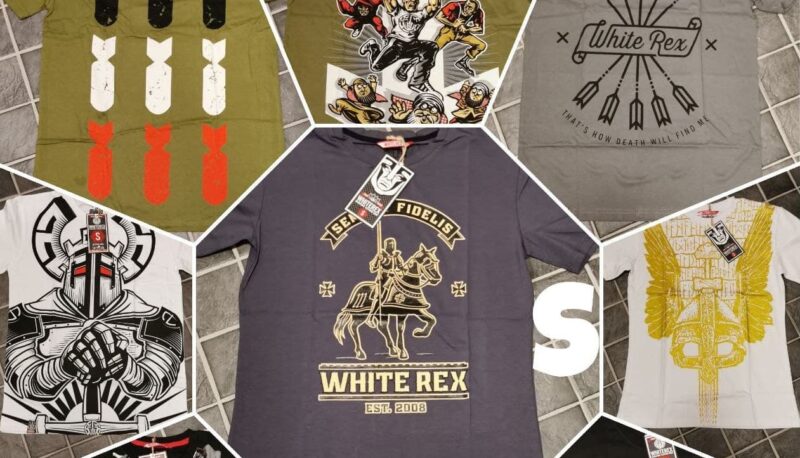They arrived in a haze of red and blue smoke.
Clad in khaki cargo pants, matching dark blue t-shirts, white face masks, and dark sunglasses, members of the white nationalist hate group Patriot Front marched through downtown Nashville on June 5, walking purposefully towards the Tennessee State Capitol. The group walked in tight formation, armed with shields and modified versions of the American flag with the Patriot Front logo of a fasces—a bound bundle of wooden rods used as a Roman symbol of power and authority—in a circle of 13 stars, in apparent homage to the original U.S. Stars and Stripes flag on which the stars represented the original 13 colonies. Their leader, Thomas Rousseau, marched at the helm wearing a cowboy hat and a blue shirt, flanked by several members holding a sign emblazoned with the words, “Victory or Death.”
The group—an off-shoot of Vanguard America, whose members are known for their unabashed white supremacism, antisemitism, homophobia, and fascism—reached the State Capitol, which houses the Tennessee General Assembly and the governor’s office, and stood before the government building. The flagbearers climbed the steps and stood, single-file, by the entrance while the rest surrounded the building. Rousseau surveyed his group, megaphone in hand, chanting “Life, liberty, victory!”
The menacing scene was typical of Patriot Front’s attention-seeking tactics, typically employed during planned demonstrations. They set off smoke bombs, march in military formation, and dress in near-identical clothing to signal their extremist views. The group’s fashion choices are particularly significant, as they reflect the ever-evolving marketing tactics that members of the far right use to convey their white supremacist ideology.
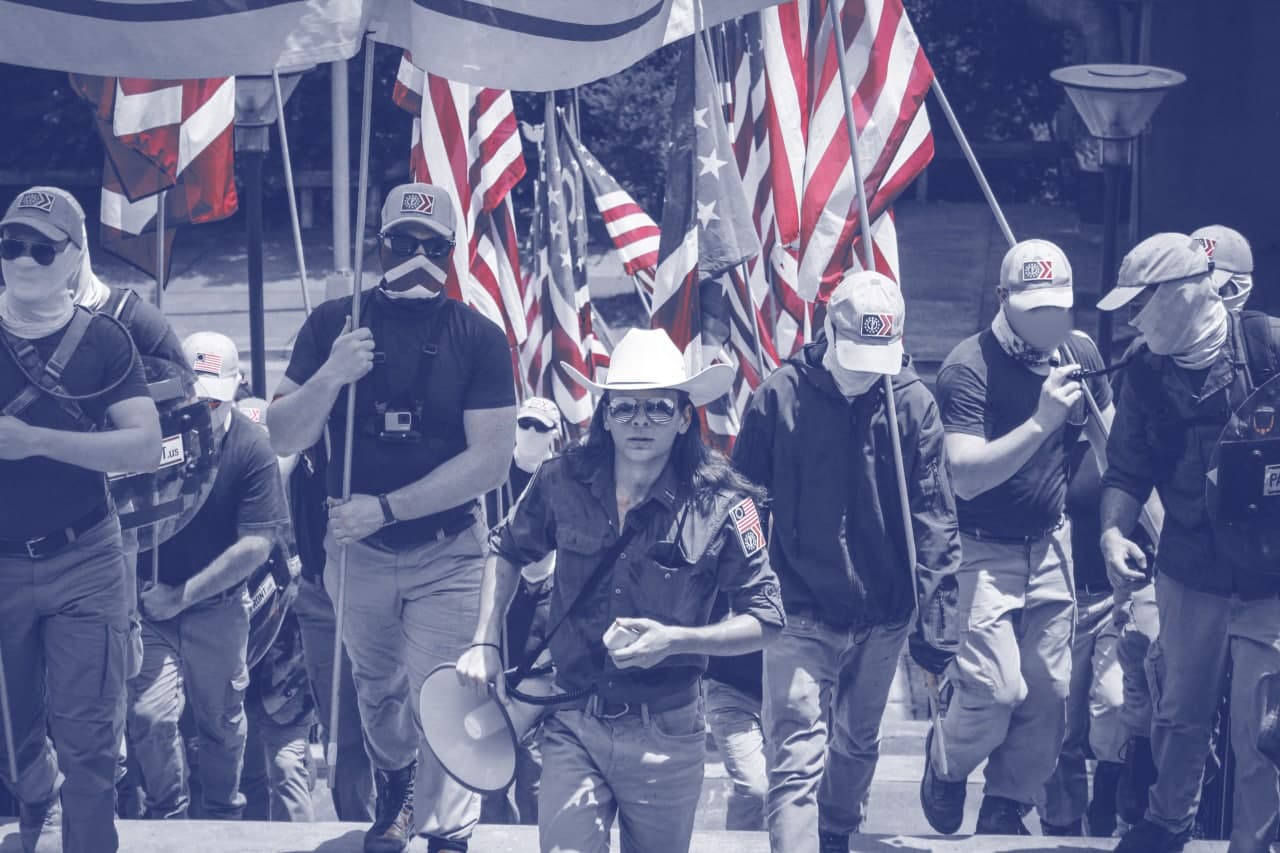
Patriot Front’s attire conveys a sense of discipline and uniformity within the group. The clothing is emblazoned with fascist symbolism designed to project strength while its homogeneity among group members protects individual identities, effectively making it an extension of the hate group’s propaganda campaigns.
As the American far-right continues to find new ways to market their extremist views, fashion has emerged as a powerful tool for fundraising, radicalizing youth, and spreading intolerance. It is an little-acknowledged gateway to extremism—one that continues to evolve as it is prioritized across the spectrum of hate.
Building Brootherhoods
In its early days, fascism embraced a particular form of sharply tailored fashion as its calling card.
Throughout the 1930s and 1940s, Benito Mussolini’s National Fascist Party in Italy used fashion as an extension of its state propaganda, employing clothing as a tool in their construction of a New Italy. It was also used in cultural expressions of gender, as the ideal female representatives of fascism in Italy were expected to be models of femininity, rejecting the gender-bending ways of the flappers from the roaring ‘20s. Fashion propaganda was further utilized by Adolf Hitler, who organized stylish photoshoots alongside his soldiers in Paris to create the façade of prosperity under occupation. The photoshoots regularly featured young women adorned with swastikas and appeared in Nazi propaganda magazine Signal. Hitler also took over France’s fashion industry, both for economic gain and as an attempt to shift fashion influence to Berlin.
Not content with his appropriation of the Paris fashion industry, Hitler collaborated with German fashion label Hugo Boss—its namesake himself a member of the Nazi party—to sponsor the Nazis’ paramilitary wing and to produce numerous uniforms for the Nazi regime, including the SS and Hitler Youth, as well as the standard Nazi brownshirts. The company used around 140 people from concentration camps to work in their factories, along with another 40 French prisoners of war.
While major fashion houses have since apologized or distanced themselves from their fascist past, clothing brands remain significant to far-right entities around the world. In the United States, the Proud Boys—a neo-fascist and misogynistic hate group that violently supported former President Donald Trump’s attempt to overturn the 2020 presidential election—coopted an understated black polo with yellow stripes made by British label Fred Perry as the group’s de facto uniform.
The Fred Perry label has been associated with far-right groups in the past. Initially, the brand was popular among the working class for providing an affordable version of the clean-cut, preppy look previously associated with the upper class in England. The shirts became popular among soccer fans and was used in the late 1960s by the British National Front, a white nationalist party, as well as by skinheads in the 1980s. The Proud Boys appear to be tipping their hat to Fred Perry’s history among extremists while incorporating an inconspicuous look that allows them to blend into crowds during protests. It was yet another example of how far-right groups use clothing to normalize hate and present a unified front. (Fred Perry has since distanced itself from the Proud Boys and has halted the sale of the twin-tipped polo in the United States and Canada.)
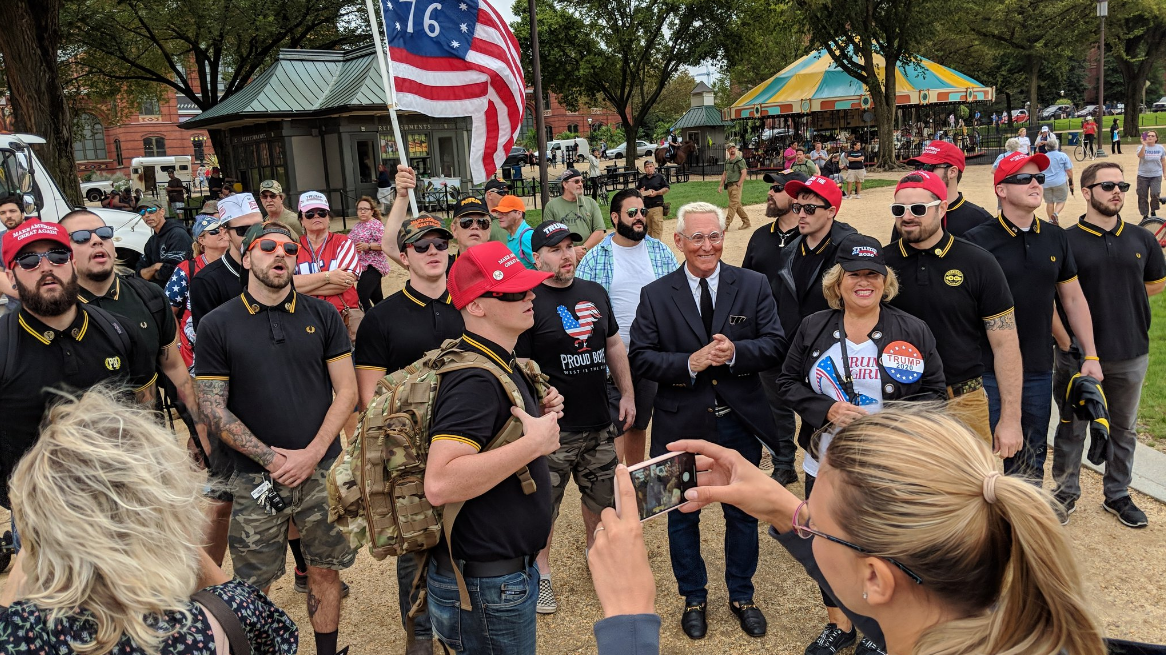
Other far-right entities that have utilized particular polos as uniforms include Vanguard America, a white supremacist and neo-Nazi organization that gained prominence during the Unite the Right white nationalist melée that took place in Charlottesville, Virginia, in August 2017. The group, founded in 2015 as part of the alt-right movement, utilizes a white polo, khaki pants and mirrored sunglasses as its unofficial dress code. This fashion choice was favored during the Unite the Right rally; some said because it echoed the outfit routinely worn on the golf course by then-President Donald Trump. The same outfit was worn by the driver who plowed his car into a group of counterprotesters in Charlottesville that day, killing 32-year-old Heather Heyer and injuring 19 others.
The use of polo shirts emphasized a new generation of far-right adherents who did not want to appear as traditional neo-Nazis or as hooded Klansmen. Instead, they coopted a clean, middle-class appearance that serves to soften their image and appeal to potential recruits by presenting themselves in less threatening guise. The 2017 Unite the Right convening attracted a sea of white, grey and black polos, which were seen on a range of attendees as they marched with Tiki torches. This led to backlash from fashion companies such as Ralph Lauren, which released a statement when asked how the Charlottesville white nationalist rally affected its preppy Polo brand.
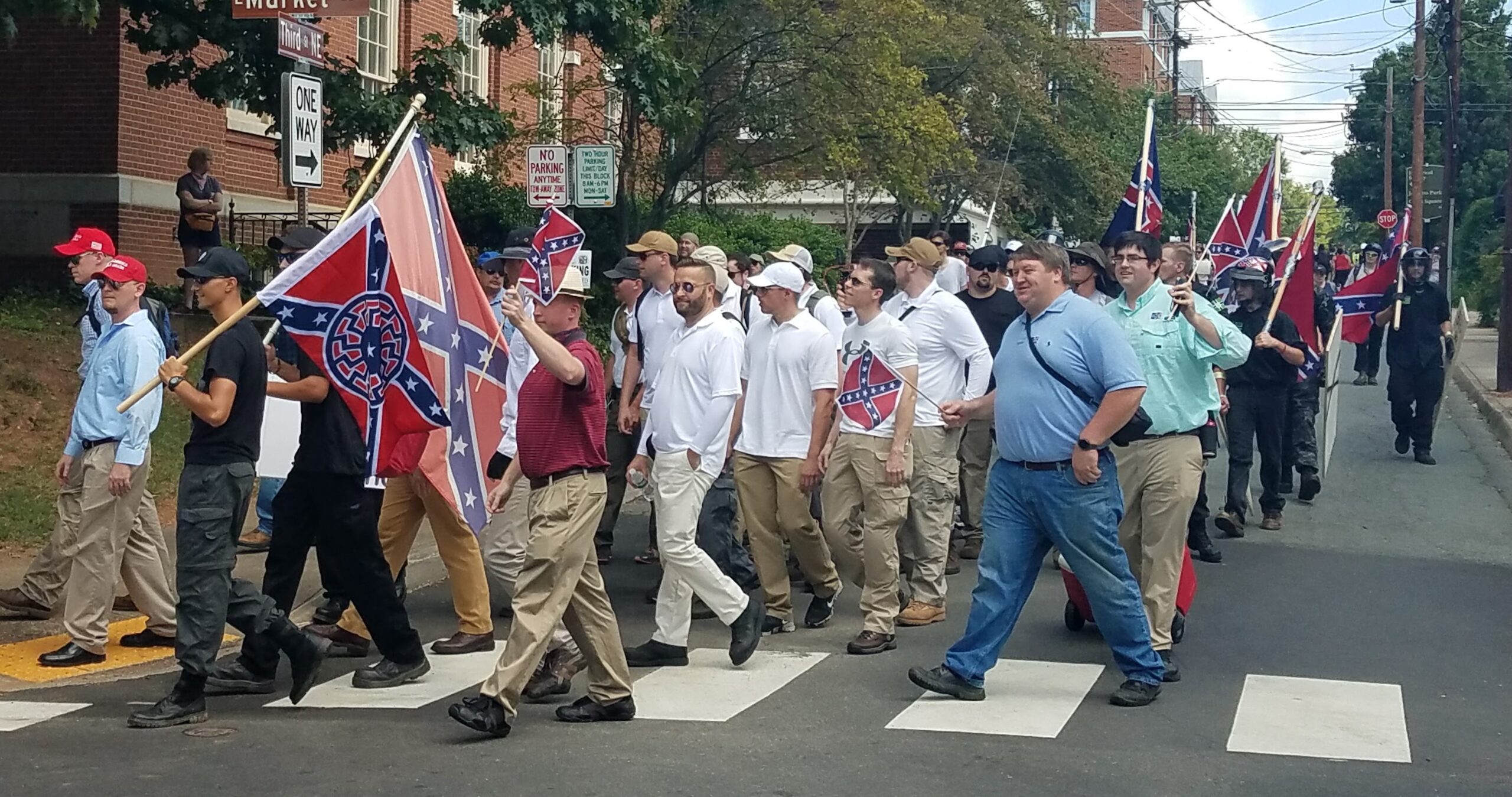
“Ralph Lauren Corporation celebrates diversity, and categorically denounces all forms of racism, hatred and bigotry,” the company said at the time.
In the years since the Unite the Right rally, fashion choices have continued to evolve along with the groups rising to prominence. The boogaloo movement—a loosely organized anti-government extremist movement in the United States—popularized Magnum PI style Hawaiian shirts as its uniform of choice during protests in the aftermath of George Floyd’s murder at the hands of a police officer. Boogaloo members, often referred to as Boogaloo Bois, regularly appeared heavily armed and dressed in Hawaiian shirts and military fatigues.
The term “boogaloo” comes from the 1984 film “Breakin’ 2: Electric Boogaloo,” which has long been the an internet meme. However, far-right channels and image board cesspools such as 4chan began using the term “Civil War 2: Electric Boogaloo” to reference a second American civil war, which they aim to incite. This development, coupled with the floral shirts, signaled a new phenomenon: the fashion of far-right groups was reflecting the influence of their cultish internet memes and humor.
Another recent development has been the increase in t-shirts with symbolism linking to the far-right QAnon conspiracy theory. QAnon adherents claim that a cabal of elite pedophiles consisting of Hollywood actors, Democrats, and high-ranking officials are behind a global child sex-trafficking ring. Supporters of the theory believe that Trump was fighting the cabal during his presidency. The Federal Bureau of Investigation has labeled the movement a “potential domestic terror threat.”
Some of those who stormed the U.S. Capitol during the Jan. 6 insurrection were dressed in clothing displaying “Q” symbols, including a popular t-shirt emblazoned with a bald eagle flying through a large letter “Q” topped with the infamous QAnon slogan, “Trust the plan.” Others bore symbols such as the “Punisher” skull, another popular image used by QAnon adherents. Many such items remain available for purchase on Amazon.
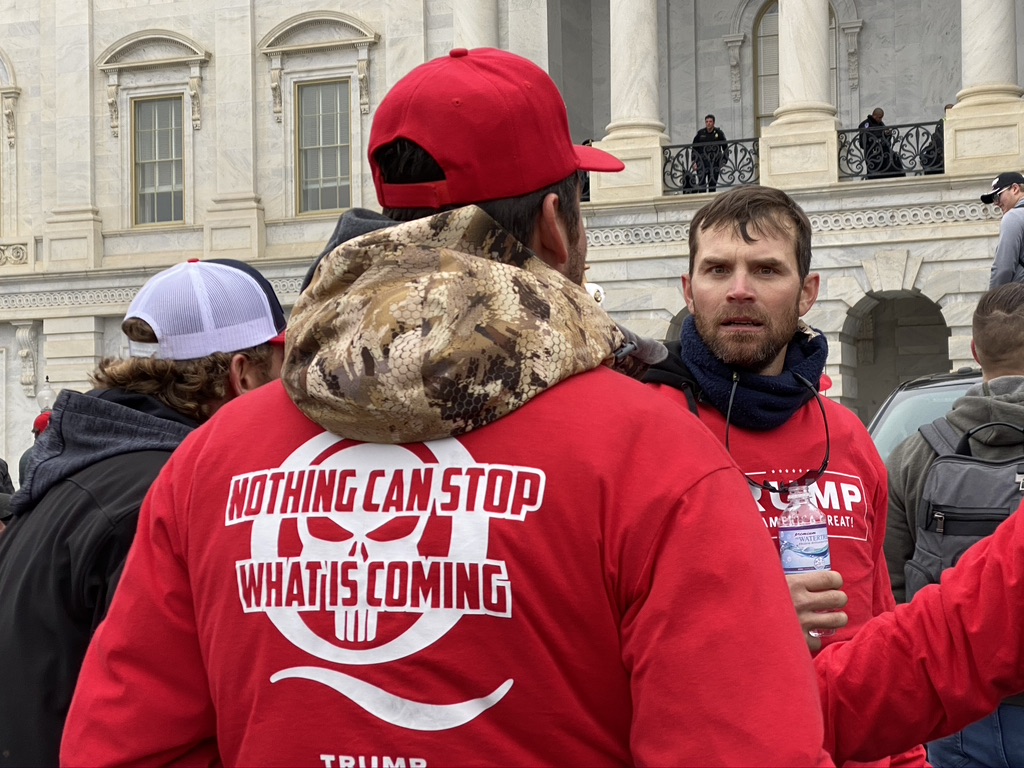
While the Hawaiian shirts and polos rose to prominence during Trump’s presidency, arguably the most influential fashion statement over the past few years has been the red “Make America Great Again” (MAGA) baseball cap.
The MAGA cap began as a show of support for Trump during his 2016 presidential campaign. However, it was quickly emerged as a symbol of hate after being coopted by extremists, terrorists, and far-right mainstays. David Duke, the former Grand Wizard of the KKK, celebrated Trump’s victory with a picture of Trump wearing a MAGA cap. The terrorist who sent pipe bombs to people he perceived to be enemies of Trump, regularly posed wearing a MAGA cap. The Parkland shooter had a MAGA cap as the avatar on his personal Instagram account. Even organizer of the Unite the Right rally encouraged attendees to “bring your MAGA hats if you’ve got ‘em.”
While plenty of Trump supporters will argue that the MAGA hat is merely a show of support for Trump’s political ideology, the hat is now associated with right-wing terrorists, far-right extremists and white nationalists of all flavors. It served many of the same purposes as other fashion garments used by the far-right: a propaganda tool used to identify members, derive strength, and spread their extremist ideology. This was particularly evident during the insurrection, where a pro-Trump mob stormed the meeting place of the United States Congress, dressed in pro-Trump attire and campaign memorabilia. Many of those pictured during the insurrection were wearing MAGA hats.
The surge of extremist clothing and paraphernalia over the past decade has also coincided with the rise of fascist fight clubs, many of which weaponize fashion as part of their extensive propaganda campaigns.
Fight Club Fashionista
When Ultimate Fighting Championships newcomer Joe Brammer walked out for his debut at UFC 107 dressed in apparel from neo-Nazi clothing brand Hoelzer Reich, it marked the first time that extremist clothing permeated the Octagon.
As Brammer approached the cage for his Dec. 9, 2009, fight against Mark Bocek, the veteran mixed martial artist could be seen clad in a black t-shirt emblazoned with two iron crosses—a famous German military medal now commonly used as hate symbols by neo-Nazis—along with a smattering of skulls and slogans such as “Strength & Honor.” The brand also incorporated icons denoting SS military ranks on their clothing.
While Hoelzer Reich vehemently denied any neo-Nazi affiliation, their clothing iconography, as well as their decision to sponsor exclusively Caucasian fighters (and one neo-Nazi fighter) raises questions about the brand’s sincerity. The clothing brand also sponsored Westwall, a neo-Nazi metal band led by the former leader of the neo-Nazi skinhead group Northern Hammerskins.
Within a matter of weeks, ZUFFA, the UFC’s parent company, banned Hoelzer Reich from sponsoring its fighters, ending the clothing brand’s relationships with notable figures such as Donald Cerrone, Mac Danzig, and Lyle Beerbohm. Yet while the Las Vegas-based UFC distanced itself from far-right fashion brands, another prominent extremist clothing brand linked to MMA was emerging 6,000 miles across the world.
Founded in 2008 by Russian neo-Nazi and MMA fighter Denis Nikitin, White Rex is a Russian-based MMA lifestyle brand that specializes in sports apparel branded with neo-Nazi and other extremist symbols. The brand has produced t-shirts emblazoned with swastikas as well as the “88” symbol, which stands for “Heil Hitler.” White Rex is also known for shirts promoting slogans such as “Zero Tolerance,” “Angry Europeans,” and “White Rex Against Tolerance.”
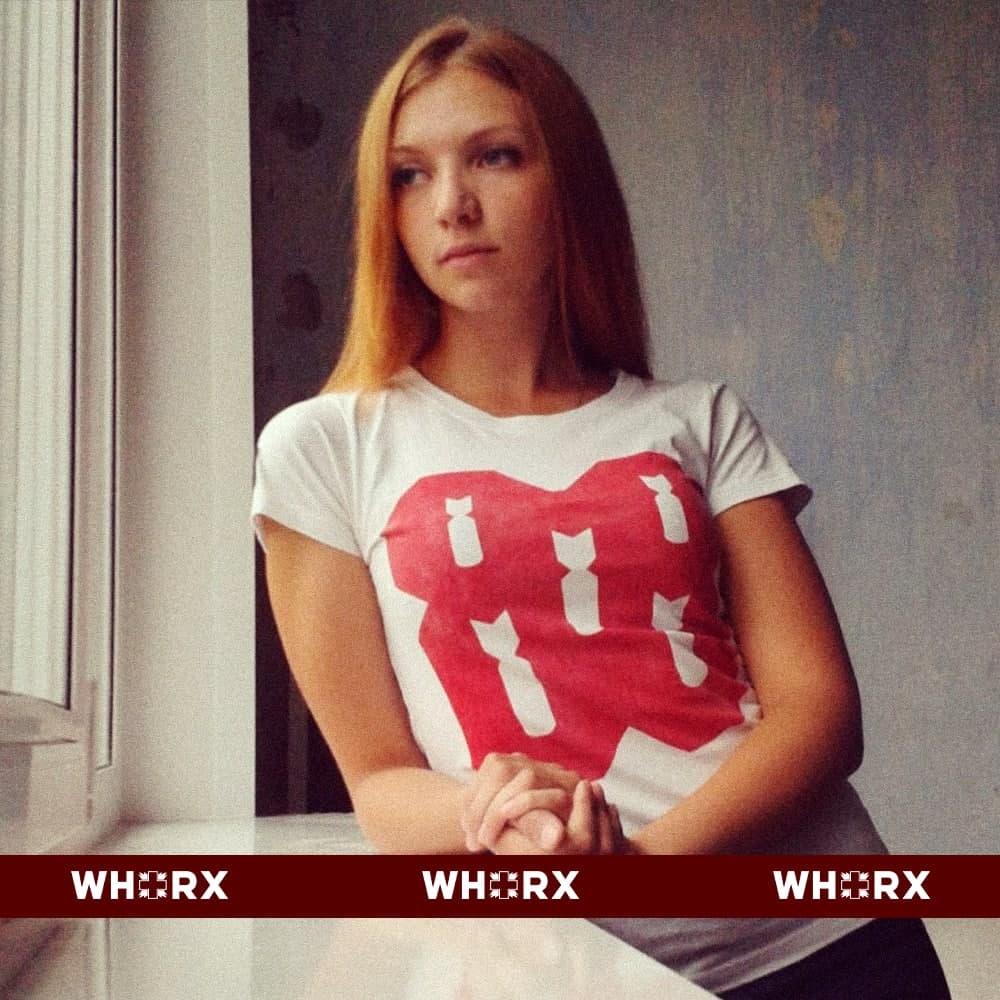
After establishing itself as a clothing brand popular among Russia’s nationalist youth, White Rex expanded to organizing MMA events in 2011. The events, which quickly grew in popularity, became a haven for notable extremists figures across Europe, including Maxim “Tesak” Martsinkevich, an infamous neo-Nazi activist who gave a spoken word performance during a 2012 event. His performance came on the heels of a three-and-a-half-year imprisonment for inciting ethnic violence. The organization also hosted Erich Priebke, a “convicted war criminal and former SS Hauptsturmführer” as a guest of honor at a 2013 event in Rome, Italy.
Over the next few years, Nikitin emerged as one of the most dangerous neo-Nazis involved in combat sports. He was one of the first people who combined the MMA subculture with far-right political ideologies. Nikitin understood the power of branding and used fashion and combat sports to target disenfranchised youth and promote an alternative lifestyle through nationalist fervor. He used models with blonde hair and blue eyes to promote White Rex clothing – another strategy to help sell the brand to the young men inclined to join their cause.
Writing in her seminal book “Hate in the Homeland: The New Global Far Right,” Dr. Cynthia Miller-Idriss stated that “hate clothing celebrates violence in the name of a cause—often using patriotic images and phrases and calls to act like an American, along with Islamophobic, anti-Semitic, and white supremacist messages. In this way, far-right clothing links patriotism with violence and xenophobia.”
Nikitin also established key affiliates in countries such as Germany, England, France, Greece and the United States, making him a pivotal figure on the far right. Among his most significant partnerships is that with the Rise Above Movement (RAM) in the United States.
Founded by MMA fighter Robert Rundo, RAM is a white supremacist, pro-Trump gang that labeled itself as the “premier MMA fight club of the alt-right,” The group rose to prominence during former President Donald Trump’s tenure in office, where they engaged in physical violence during protests in Huntington Beach, Berkeley, and at the Unite the Right white supremacist mayhem event in Charlottesville.
The relationship between White Rex and RAM began as an act of mutual respect on social media. RAM started off by posting links to White Rex’s clothing and events before eventually selling the clothing on its own apparel website, Right Brand Clothing (which has since gone offline). It was the first time that White Rex clothing—rife with hate symbols such as the SS bolts—was sold in the United States.
In May 2018, some of the leading members of RAM embarked on a European tour that included a stop in Kyiv to meet with Nikitin. During RAM’s visit to Ukraine, Rundo participated in a boxing match for Reconquista, a white supremacist fight club based in Ukraine that is also associated with the far-right ultranationalist Azov Battalion. The meeting underscored the fact that these fascist fight clubs and extremist lifestyle brands were creating an international network of violent white supremacists trained in MMA. Shortly thereafter, in October 2018, the FBI issued arrest warrants for leading RAM members, which eventually led to four members being sentenced to five years in prison.
While the FBI arrests signaled the end of RAM’s violent encounters, its founder Robert Rundo continues to promote the group’s ideals while furthering his relationship with the likes of Nikitin. He started a podcast with Nikitin that taught fellow nationalists how to form their own hate groups. Over the course of five episodes to date, the two white supremacists have covered a wide range of topics for prospective white nationalists, including how to protect your identity from journalists and investigators, how to stay safe during street fights, and how to effectively spread propaganda in order to maximize outreach.

Rundo also founded several media entities, including Media2Rise, an alternative media source where the far-right extremist posts his propaganda, as well as blog posts promoting the “nationalist lifestyle.” His posts include “Combat Sports For The Future Nationalist,” where he referred to mixed martial arts as a “weapon” for white supremacists. He also published a series of YouTube videos teaching people the benefits of activism, street propaganda techniques, and tips for traveling incognito.
Rundo is also one of the key figures who is attempting to use extremist clothing as an alternative revenue stream to offset legal fees and in order to further his far-right agenda.
Fundraising Through Fashion
“We’ve returned with a spirit of defiance.”
This is the statement RAM shared on its various platforms, including far-right social media space Gab. The statement came with a new video featuring footage commemorating the RAM members who were “wrongfully imprisoned” while also celebrating the charges dismissed against Rundo and a handful of other members. The group announced a partnership with far-right apparel store Our Fight Clothing Co to feature several of its branded t-shirts, the proceeds of which it claimed would “go directly to our legal defence.”
While Out Fight Clothing Co is no longer accessible online, Rundo went on to create his own clothing platform named Will2Rise, where he sells a wide range of extremist-branded clothing linked to RAM, White Rex, and other far-right labels and organizations such as Revolt Against Tradition, Serbon, and his own Will2Rise branded apparel with slogans such as “Cultured Thug.” Rundo even models the clothing featured on the site himself.
Rundo, who was recently living in Serbia until he was reportedly expelled earlier this year by local police earlier this year, described his clothing company as a platform where “all products are made in Eastern Europe, so not a single hand touches the production that is not of like mind.” He added that sales on the platform keep “our people employed and helping families,” thereby emphasizing the financial significance associated with owning a far-right clothing company.
The Will2Rise store is far from the only outfit dealing in extremist clothing within the combat sports space. Pride France, a French extreme-right lifestyle brand and neo-Nazi fight club, sells streetwear, fight gear and accessories ornamented with neo-Nazi symbolism. Some of Pride France’s most popular clothing items include its HTLR women’s t-shirt, and others that include slogans like “White Division” and “Defend Your Tradition.” The brand even has a “Halloween” shirt depicting a smiling KKK caricature with a noose and a flaming torch, as well as a selection of children’s clothing with similar white supremacist slogans.

Much like its fellow neo-Nazi lifestyle brands like White Rex, Pride France uses Caucasian women with blonde hair to model their clothing items as part of their attempt to propagate racial bias and to highlight the supposed Aryan qualities of Europeans. The women selected to model are usually young, attractive, and athletic, which serves the purpose of making the brand’s mission statement and its clothing more appealing.
The Germany-based far-right combat sports organization Kampf der Nibelungen (KdN) is another example of an MMA entity that sells far-right clothing to help fund its activity. The organization held its events in secret locations and mainly targeted disenfranchised German youth. However, the group’s recent events have been subjected to police raids, and were even forced to cancel their annual showcase event in June 2019. However, despite facing pressure from German authorities, KdN has reinvented itself as an MMA clothing brand that sells apparel with clever iconography devoid of obvious neo-Nazi symbolism.
The KdN website is now limited to an online clothing store that sells t-shirts for men and women. They also maintain accounts on mainstream social media platforms such as Facebook, where they also sell their merchandise. Their Facebook page, which remains active at the time of this article’s publication, features t-shirts, hoodies, shorts, wallets and coffee mugs plastered with the KdN logo.
While only a handful of far-right brands have managed to sell their clothing on mainstream platforms such as Facebook, several have turned to alternative platforms such as Telegram to reach a wider audience. Relatively new brands such as Asgard Brand, Radical Sh8p, Walknvt brand, Midgaard Shop, Svarog, Elite Comp., White Rhino, and Serbon Shop run dedicated pages on Telegram where they market their latest clothing to like-minded followers. These brands rely on email exchanges to take orders and are mainly paid using Paypal.
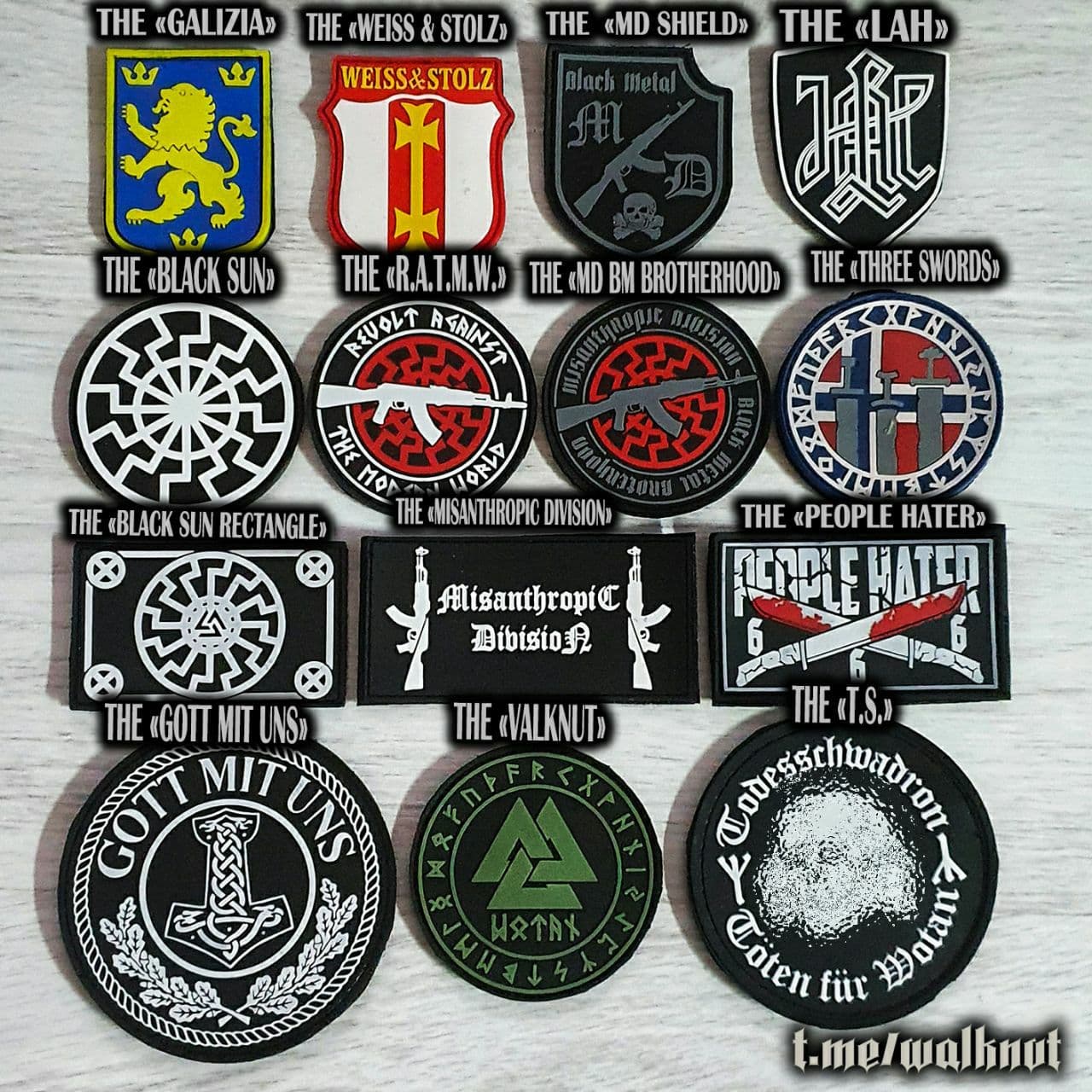
It is worth noting that Telegram has made little effort to ban these extremist clothing shops from operating on its platform. Of the 32 shops that Right Wing Watch has monitored on Telegram, only two have been censored on Apple and Android devices, while two others have been removed. The vast majority, however, continue to sell clothing promoting violence based on race and ethnicity.
The far right’s use of fashion as a fundraising tool extends beyond MMA lifestyle brands. 1776.shop, a far-right merchandise store affiliated with Proud Boys leader Henry “Enrique” Tarrio, continues to sell fascist and right-wing political shirts, hats and paraphernalia ranging from t-shirts with slogans such as “Pinochet did nothing wrong” to others that read “Stealth Commie Killer.” While the Proud Boys previously used the e-commerce site to fundraise after 10 members were arrested in Manhattan following a violent brawl in October 2018, payment processors such as Square, Chase, and Paypal have pulled their services, limiting the group’s ability to take payments. 1776.shop now accepts payments in “crypto or Bitcoin.”
Clearly hindered by the effects of being de-platformed, Tarrio reportedly started selling t-shirts with slogans supporting Black Lives Matter and featuring anti-Trump messaging in order to circumvent his troubles with card payment processors. Given that Tarrrio did not share the name of his new business, Right Wing Watch was unable to verify its existence.
Ali Alexander, the far-right leader of the so-called “Stop the Steal” movement that promoted the baseless conspiracy theory that former President Trump won the 2020 presidential election, also began selling merchandise in an attempt to generate passive income. As previously reported on Right Wing Watch, Alexander used Gumroad to sell merchandise that includes a “Joe Biden is Sicko” hat as well as mugs and T-shirts emblazoned with the far-right activist’s mugshot, taken when he was arrested on theft and credit card fraud charges in 2007.
“Ali Alexander has long been fighting off trolls that try to hold his past against him,” read the description beneath his mugshot T-shirt. “These NPCs just don’t know when to let up. This is a man who has been in the political arena for 14 years going toe to toe with the best of the best. He knows about the mugshot. And guess what? He found a way to profit off it! Support the baddest man in politics with this Ali Alexander Mugshot Shirt. All sales are final. There are no refunds.” (NPC appears to stand for “non-player character,” a term used to describe someone who is unable to think objectively.)
Much like hate music, fashion can serve as a gateway to far-right extremism. It can strengthen bonds, further political agendas, and promote racial and ethnic violence. Though the far right’s embrace of fashion as both a political statement and an alternative revenue stream is a relatively recent phenomenon, it is unlikely to fade from memory anytime soon. The market for hateful merchandise is a burgeoning one, accessible to those who are able to afford the cost of international shipping. From fascist fight clubs selling apparel promoting ethnic violence to QAnon shirts imploring people to “Trust the Plan,” there is no shortage of extremist ware across the internet’s virtual cesspools.




